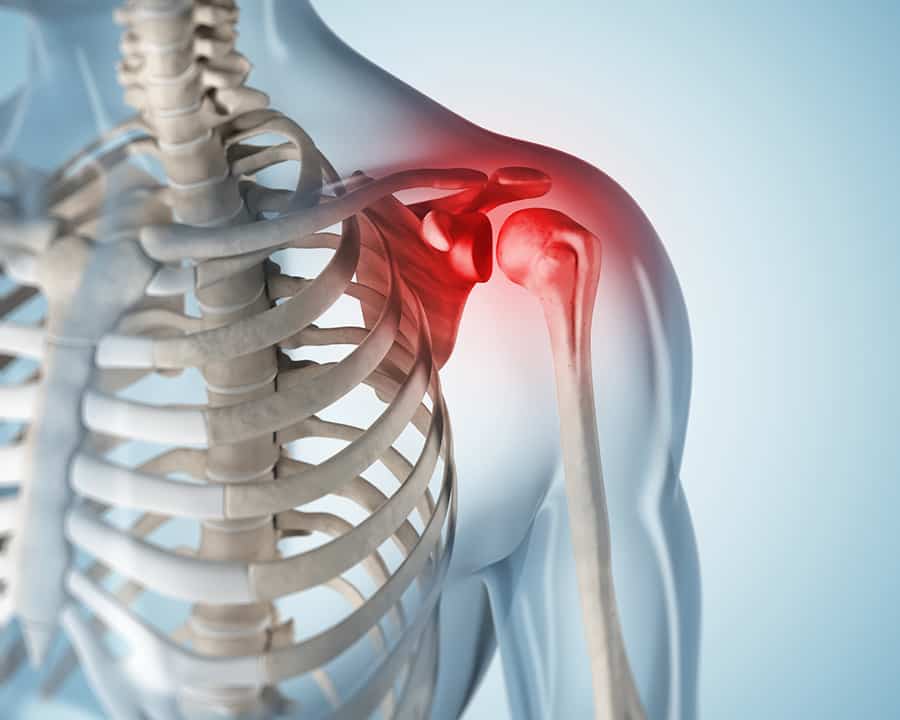
Frozen shoulder release can help with one of the most common shoulder complaints among adults, affecting an estimated 18-26% of individuals at some point. Various factors, including repetitive stress, poor posture, rotator cuff injuries, and arthritis, can cause this type of pain. But if you’re dealing with the discomfort of what Western allopathic medicine terms a “frozen shoulder,” you know how difficult it can be to find relief. And while there is no easy fix for the symptoms doctors describe as frozen shoulder, certain exercises may help release shoulder tension.
Taking the time to care for and nurture the muscles and fascia around the shoulder joint is an important component of any mobility program. Taking care of your shoulders should be a priority. If you care for them now, you can enjoy sports and other hobbies without pain for years.
In this blog, we look at three of the most effective exercises for frozen shoulder release – from stretches to targeted strengthening moves – that will hopefully provide relief. However, we’ll also cover how to fix so-called “frozen shoulder” symptoms if these exercises don’t work.
Other blogs from Release Works
Healthy Habits To Adopt For A Brighter Future
Are Migraines Plaguing Your Daily Life?
How Breast Augmentation Scars Can Cause Pain and Problems, Both Now And Later
What Is a Frozen Shoulder?
If you ever have trouble moving your arm or shoulder, doctors may diagnose you with a condition they refer to as “frozen shoulder.” But like many allopathic medicine diagnoses, the name describes the symptoms, not the root cause. But what exactly is the condition they call “frozen shoulder” and what is frozen shoulder release?
Well, it is true that the symptoms can be painful and limiting. They affect millions worldwide, yet in Western medicine circles, the true source of the presenting symptoms is not well understood.
Frozen shoulder, or adhesive capsulitis, is a (too) commonly diagnosed condition that affects the shoulder joint. Doctors characterize the condition by pain, stiffness, and limited shoulder mobility. Doctors don’t know the cause but believe several factors may contribute to its development, such as diabetes, thyroid disorders, and prolonged shoulder immobilization. Typically – following traditional medical philosophy, a frozen shoulder is said to progress through three stages: freezing, frozen, and thawing, with each stage lasting for several months.
Diagnosing a frozen shoulder typically involves tests to rule out other possible causes of pain and stiffness. Once diagnosed, treatment can involve physical therapy, pain management, and medication. Some cases may even require surgery to loosen up the joint. However – as Myofascial Release Therapists, we approach the so-called “frozen shoulder” in a completely different manner – starting with finding the true source of the pain and working back from there.
Myofascial release therapy is emerging as a viable treatment option to alleviate frozen shoulder pain and improve mobility in the affected area. This technique receives regular praise for relieving pain and restoring mobility to stiff joints. The idea behind the therapy is that the cause of the pain is not actually in the location that’s hurting but rather the tissues surrounding it. During the therapy, we apply pressure to certain points in your body to release tension and decrease pain. Using this technique, we target the root cause of the problem and avoid resorting to invasive methods such as surgery.
While it can take time and effort to recover from feeling like your shoulder is “frozen,” it is possible to regain your full range of motion without surgery or other invasive treatment methods and return to your daily activities without pain, stiffness, or discomfort.

Get Relief with Frozen Shoulder Release
If you have shoulder issues, we encourage you to book a free discovery visit to learn more about how we can help you. But if you’re looking for some immediate relief from the pain and stiffness, you can try these simple exercises:
One very important caveat– most people apply these exercises and stretches far too aggressively. At all times, but especially in the case of a frozen shoulder, trouble and restriction in your body should be approached gently, with a sense of breathing and softening into difficult or tight areas – not, I repeat not, pushing the range and trying to make things move. This goes for “digging” at your body with foam rollers or lacrosse balls and the like. You should gently explore, nudge into tightness or soreness, then breathe and soften as the tissues of your body gradually ease, and you begin to feel your frozen shoulder release.
- Stretch your arms regularly with exercises such as wall angels and shoulder rolls: If you ever sit at a computer for long periods, you know that your shoulders and arms can start to feel stiff and uncomfortable. One of the best ways to combat this is to stretch regularly. Wall angels and shoulder rolls are simple yet effective exercises that can help relieve tension in these areas. You can increase your flexibility and prevent discomfort by taking just a few minutes every day to incorporate these stretches into your day. It’s a great way to reset your mind, refocus your energy, and release chronic stress and tension in your shoulders.
- Gently rotate your arm in circles on both sides of the body to increase the range of motion: Regularly incorporating gentle arm rotations on either side of your body can increase the range of motion in your shoulders. By rotating your arms like this in a circular motion, you’re actively engaging the muscles and joints in both your shoulders and upper arms, increasing flexibility and strength. So, whether you want to improve your day-to-day functionality or alleviate the discomfort or tension you may be experiencing, this is an easy and effective exercise worth considering.
- Incorporate foam rolling into your routine for increased flexibility in the shoulder area: If you’re an avid gym goer or athlete, you’ve probably heard of foam rolling. But have you considered incorporating it into your routine for increased flexibility in the shoulder area? Foam rolling is a simplified form of self-myofascial release that can help relieve muscle tension and improve shoulder mobility. The shoulder joint is incredibly complex and prone to tightness, especially if you spend a lot of time hunched over a computer or driving. Using a foam roller, you can target the shoulder, chest, and upper back muscles, releasing tightness and restoring range of motion.
- Perform shoulder blade squeezes to activate the muscles around your shoulders: If you want to strengthen and improve your posture, shoulder blade squeezes are a great exercise. This simple yet effective movement involves pulling your shoulder blades together and down your back. Not only does this activate the muscles surrounding your shoulders, but it also helps to counteract the negative effects of slouching all day. Plus, you can do shoulder blade squeezes virtually anywhere, whether sitting at your desk or waiting in line at the grocery store. They can make a real difference in your upper body strength and posture.
- Use a lacrosse or tennis ball to break up knots and tightness in the affected area: If you’re someone who frequently experiences muscle tightness or knots in and around your shoulders, there’s a simple solution that you can consider – a lacrosse ball or tennis ball. You can help to break up those knots and release tension in your shoulder by using one of these balls to massage the affected area. It’s a cost-effective and easy way to give your shoulders some TLC. Plus, it’s customizable – you can adjust the pressure and intensity to meet your needs.
You could also try a massage with the help of your partner or a friend. The area near the shoulder joint can often be a source of tension and discomfort. By targeting the muscles and superficial connective tissue in that specific area, massage can help to temporarily release tension and knots, providing short-term relief and frozen shoulder release. Massage can be quite intense if you’re already holding a lot of tension, but the benefits can sometimes be worth it. However, stop if you feel worsening pain.
“I’ve tried everything, but I’m still in pain and can barely move my shoulder. Now, what?”

How Myofascial Release Therapy Can Fix “Frozen Shoulder”
If you have limited shoulder mobility and your shoulder feels “frozen,” Myofascial Release Therapy can be incredibly beneficial for frozen shoulder release. After a thorough evaluation of your shoulder and the rest of your body (everything is connected), we create a personalized plan to “release” the tension and the restrictions in your fascia (connective tissue) to radically improve your shoulder mobility.
We use techniques unique to Myofascial Release Therapy to target specific areas of your body that may contribute to that “my shoulder is frozen” feeling – such as your joints, muscles, and nerves. Most importantly, we work on relaxing and releasing the restrictions in your “fascia” – the connective tissue that runs throughout your entire body – that have formed in your shoulder and other areas over your body over many years. These restrictions result from chronic stress and tension, both physical and emotional, accidents, illness, and old scar tissue.
This technique involves applying gentle, sustained pressure to the fascia around the affected area, helping to release tightly bound restrictions and restore the proper movement and tension of the body. Unlike other treatments that only provide temporary relief, myofascial release therapy provides long-lasting results by addressing the root cause of the pain.
By addressing the tightness and inflammation in the connective tissues surrounding your shoulder joint, we can help recover your range of motion and reduce pain. In addition to these physical benefits, myofascial release therapy positively impacts your emotional well-being by reducing stress and promoting relaxation.

